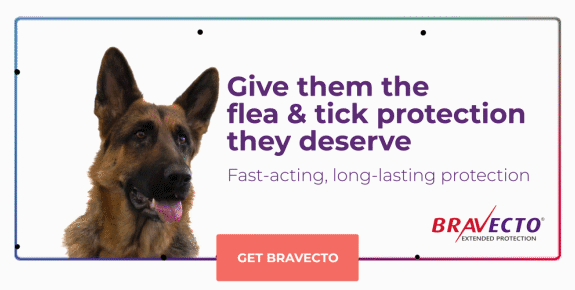Worms: Effects on Pets and People

Why should I bother to pick up my dog’s poop?
Responsible pet owners pick up their dog’s poop from their own gardens and during walks. This helps to protect other pets and people too.
Did you know that your dog, other dogs and human beings can be harmed, sometimes incurring serious infections, by the parasites in dogs’ faeces? These infections can have serious outcomes, caused by these parasites. We are going to look at two types of parasites: tapeworms (cestodes) and roundworms (nematodes).

What are roundworms?
Roundworms, also called ascarids, occur very commonly in young puppies, up to six months old. All puppies should be treated for worms. Signs of roundworms can be vomiting, lack of appetite, diarrhoea and dehydration. These symptoms, together with a bowel obstruction, may be fatal, especially if the puppy is very young. Puppies’ stomachs may be swollen, giving them a ‘pot-bellied’ appearance, which may be an indication that worms are present.
In adult dogs, the symptoms may be less obvious or may even be absent. Lethargy, occasional vomiting and lack of appetite may be seen, but these symptoms can also occur with other diseases.
So how are roundworms transmitted?
Unborn puppies can be infected by these worms through the placenta. The mother’s milk or infective eggs in their surroundings, can cause infection after birth. Ingestion of infective eggs causes infection in adult dogs.
The worm’s eggs hatch once inside the dog and the larvae migrate, through a complicated process, through the dog’s tissues, which can injure the dog. They arrive in the intestines where they become adults, completing the cycle.
Once in the intestines, the adult worms compete for nutrients with the dog’s digestive organs, which is harmful to the dog, who may suffer from weight loss, diarrhoea and vomiting.
How can humans be harmed by roundworms?
When the eggs are ingested by dogs, they may not be infective at first, but they develop into an infective form once inside the dogs, or in the environment too if we take too long to clean up after our dogs. Larva migrans can develop if humans accidentally ingest these infective (larvated) eggs of the roundworms. This is because the developing worms migrate through the host’s tissues in order to complete their life cycle. Sometimes, in fact, the migrating larvae get lost and arrive in other places in the host’s body, causing damage and injury. The brain, internal organs and eyes can be injured.

What are tapeworms and how are they transmitted?
Tapeworms, often called cestodes, have a segmented, flat, ribbon-shaped body. These segments, called proglottids by scientists, are full of maturing eggs. The segments break off from the worm and dogs excrete them with their faeces. Another animal or insect (called an intermediate host) may then eat and ingest the eggs which, in an encysted form, migrate in the animal’s tissues. When another dog eats these encysted eggs from the intermediate host, he becomes infested.
There are several types of cestodes and each has a particular life cycle. The type which is transmitted by fleas has rice-sized segments and can often be seen on the dog, on the dog’s faeces or in the dog’s bed. Clinical symptoms of tapeworm infections are extremely varied.
How can humans be harmed by tapeworms?
The dog tapeworm (Echinococcus granulosis) and the fox tapeworm (E. multilocularis) can cause serious and sometimes fatal diseases in humans. Some countries, in an effort to control this, insist that dogs from other countries are treated to remove these parasites, before entering their country.
The juvenile stages of tapeworms form large cystic forms in the tissues of humans, causing a dangerous infection. The adult forms of tapeworms are small and motile segments are not shed.
The flea tapeworm (Dipylidium caninum), transmitted by fleas, is a very common reason for cestode infestation in dogs. A dog may ingest infected fleas when grooming. Children, in particular, may accidentally swallow an infected flea and become infected.
Mobile segments of this tapeworm, which look like rice grains when dry, may be seen around the dog’s anus, on the faeces and in the dog’s bed.
How do I prevent and treat worms in my dog?
- Puppies should be dewormed regularly from two weeks after birth until six months old. Thereafter, they can be dewormed once every 3 months as in the case of adult animals.
- Start regular check-ups with your vet when your dog is a puppy.
- Young and adult dogs should be risk assessed for roundworms and tapeworms with regular stool tests, which allow your vet to check for internal parasites.
- These tests assist your vet in advising you about the best treatment for your dog.
All pet owners should always act responsibly to help reduce transmission of worm infections in other dogs and humans by promptly picking up and safely disposing of their dogs’ poop. Everyone’s health is protected by keeping a clean environment.
ZA-BRV-220500009

Subscribe to our Newsletter
Get to know your furry friend better! Sign up for all things dog- or cat-related.
The Hairy Facts about the dreaded hairball
12 April 2021
Help! My dog’s barking mad! Volume 2
12 April 2021
Your Itchy, Scratchy Cat – All About Cat Skin Problems
12 April 2021
The Dog’s Diet: A Bone of contention?
01 April 2021
Mango Fly Worms: How to Spot and Eliminate them
Posted on November 28,2019
Managing Mange And Mites In Your Dog
Posted on June 11,2018
Why Do Cats Purr and How? Learn What Your Cat Is Saying
Posted on October 14,2020
How to Get Rid of Ear Mites in Dogs
Posted on November 06,2019









